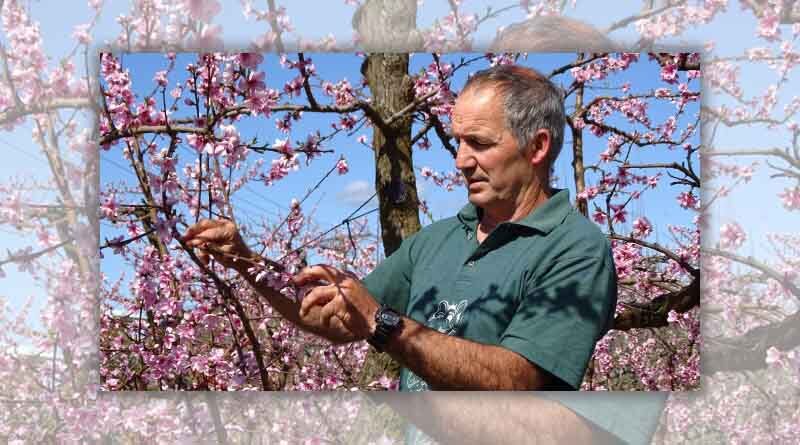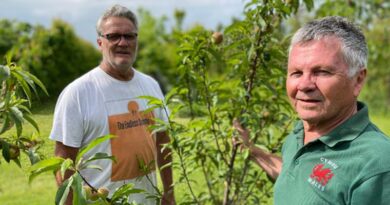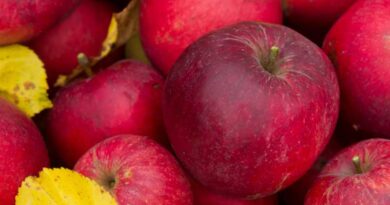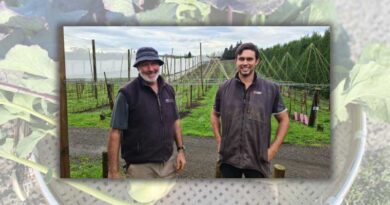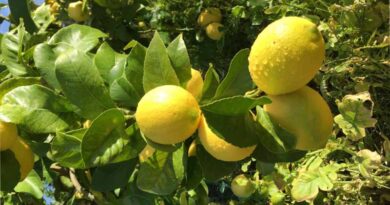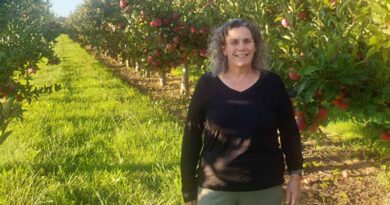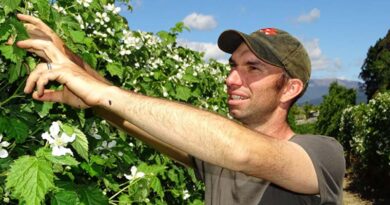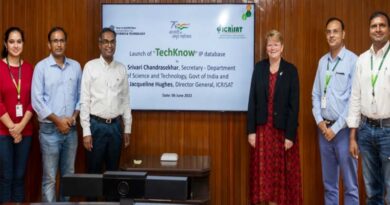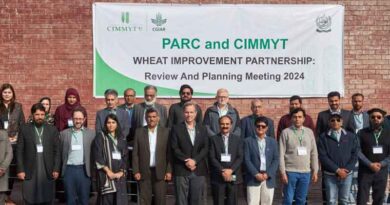Peachy lifestyle remains on 120-year-old orchard
26 October 2022, NZ: A flurry of pink peach blossom on Umukuri Orchards near Motueka stands out in a landscape dominated by apple and hop crops. The region is not renowned for its stonefruit crops, but Alan and Jill François spend their summers harvesting plums and then peaches for the local market. ANNE HARDIE reports.
The François family have been tending crops on their land for nearly 120 years – from hops to apples and tobacco, then kiwifruit, more apples and a few peaches and plums thrown into the mix.
Alan grew up on the 14-hectare family orchard, but the year before he stepped in to take over the reins, a fire destroyed the tobacco kiln and hail wiped out the bulk of the apple crop. Alan and Jill have experienced two more massive hailstorms over the years that decimated their apples, but Alan says horticulture is in his blood and he has never wanted to do anything else.
A couple of decades ago when apple prices were low, the Françoises opted to remove some of their Braeburn trees and replace them with peach trees. Peaches were an enjoyable change and as grandkids came along, they scaled their business back by leasing out the apple orchard and focusing on the peaches. Today, their 700 peach trees produce between 15 and 20 tonnes of peaches a year, and the orchards also yield smaller quantities of plums and apples.
Summers are spent harvesting, packing and delivering their fruit to a few selected outlets in the region, with weekends at local markets, including the thriving Nelson Market. Dealing directly with their customers was a new experience and enabled them to get direct feedback on their peaches. They have been setting up their stall at the Nelson Market for 12 years now and Alan says they know their regular customers and have watched their children grow up in that time.
Their Coconut Ice peach variety is a firm favourite with customers, who “go bonkers” over its taste. This pink-skinned variety has white flesh with a coconut-honey flavour.
“We had one customer who used to buy five or six bags from the market every week and her daughter would eat five or six peaches a day,” Alan says. “She even took a suitcase of them to a wedding in Singapore.”
Coconut Ice is ready from the beginning of February and follows Scarlett O’Hara which is a firm, crunchy and white-fleshed peach. A late-harvest variety, Yumyeong, continues the season toward the end of February. On the outside it has a burnished red look over cream, and inside is a crisp, white flesh with a tropical taste. Yumyeong achieves high yields and is their highest-producing variety.
Older varieties including Wiggins, Red Haven and of course, Golden Queen, are still in the orchard mix, though they tend to have a softer texture. Due to their vulnerability, they are sold at a roadside stall packed into cardboard tubs, rather than transporting them to markets where the other varieties are packed into paper bags. The bags are triple the cost of the plastic bags of old, but as well as the environmental benefits, customers don’t handle a paper bag full of peaches in the same way they used to handle plastic bags to check fruit, so the fruit is treated better.
Despite the soft appearance of peaches, Alan says the crisper varieties are actually quite tough to handle and pick well.
“They’re brilliant; they don’t bruise.”
Alan and Jill leave the fruit on the trees to ripen and gain the full flavour that customers expect, although he says it is a fine line between ripening the fruit and leaving it on the tree too long.
The crisper varieties remain crisp even when they are fully ripe, and Alan says they often need to tell customers to eat the fruit crisp because many assume they are only ready to eat when they become soft. He says those varieties tend to go mealy rather than soft if they are left too long.
He also recommends to customers that they store their peaches in the fridge to keep them longer. On the orchard, they can keep peaches in the chiller for up to three weeks, but that is the limit before they begin to deteriorate. At harvest, they grade the fruit on the back of the ute, packing it into crates to deliver to stores, with the remainder put into the chiller to take to market.
Engaging with their customers at the markets has been an enjoyable part of the business and they see families return year after year for their peaches. They sell 1.2kg bags for about $6 a bag and though they could perhaps charge more, Alan says it is also about making their peaches affordable to a variety of customers and balancing the price of the fruit with their customer base.
Once harvest is behind them, the next big job is pruning. Traditionally, peaches are vase-shaped trees, but Alan opts for a single leader in their trees, enabling light to reach the lower branches which otherwise tend to die with insufficient light. A single leader also makes the trees more accessible for ladders.
Umukuri Orchards uses a hydra ladder for pruning and thinning, but a normal ladder for harvest because they can work a ladder around the tree easily and “it keeps me fitter,” says Alan.
Silver leaf, a fungal disease causing infected branches to die back, is not uncommon in peaches. Curly leaf, another fungal disease, and bacterial blast are also problems associated with peach crops. Thankfully, Alan says they can all be managed with preventative sprays, and having a good spray programme in place to keep problems at bay.
From mid-November, Alan and Jill begin thinning the peach crop on the trees, and that takes them about a month. By then they are beginning to harvest the first of the plums.
In the past, the Purple King was one of their key plum varieties, whereas today the main variety and customer favourite is Omega with its juicy, red flesh. Duff’s Early Jewel and Wilsons are good early crops ready for Christmas, while the variety Louisa is later in mid-February. The old favourites, greengage plums and blood-red satsuma, remain. Plums only comprise a small part of Umukuri Orchards’ business though, so are sold at their roadside stall.
The busiest period is through harvest and it is usually just Alan and Jill up the ladders picking fruit each day. This past season, they were joined by half a dozen Recognised Seasonal Employer (RSE) scheme workers to get the crop off the trees fast. Heavy rain was forecast at the peak of the harvest in February – the event that flooded Westport – which would have destroyed much of their peach crop. Fortunately, they were able to borrow workers from the leased apple orchard to harvest the peaches. Alan says it was fantastic to have them in the orchard to get fruit off the trees so quickly and they could never have managed it by themselves before the heavy rain set in.
Despite the challenges of the weather over the years, Alan wouldn’t want to be doing anything else, and the peaches have proven to be an enjoyable crop.
“I’ve always enjoyed orcharding,” he says. “I love it. It’s a good lifestyle and I like getting out and doing the pruning, shaping the trees and getting ready for the next season.”
Also Read: List of pesticides restricted and banned for use in Agriculture in India
(For Latest Agriculture News & Updates, follow Krishak Jagat on Google News)

